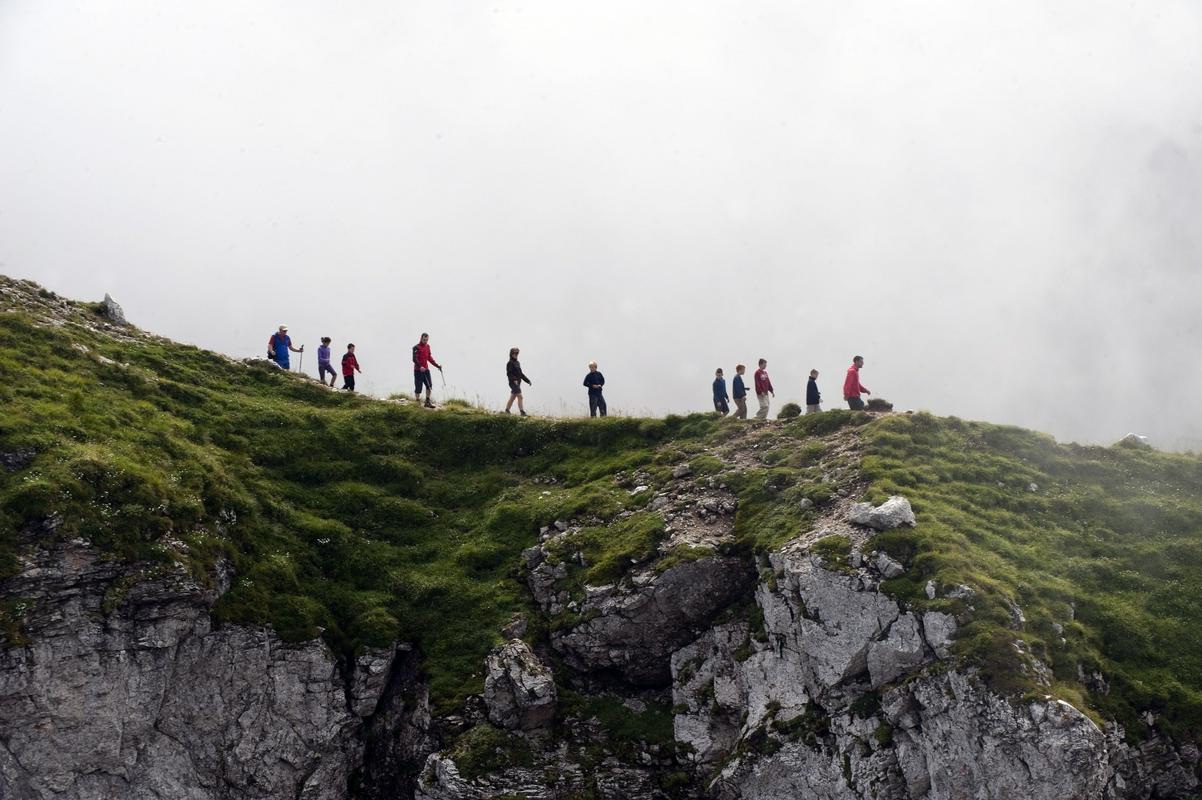
The Slovenian Press Agency (STA) reports that the Kranj Police Department is warning hikers to make informed decisions, to remain vigilant, and to monitor the weather. The warning comes after a spate of mountain accidents in the past few weeks. On Tuesday alone, the helicopter mountain rescue team, together with a police officer from the mountain safety unit, made four separate interventions.
“The helicopter is essentially a flying ambulance. It ensures that the injured receive professional medical care as quickly as possible. But choppers have their limitations. If the mountains are enveloped in cloud or fog, or if there are high winds, the helicopter can’t take off or reach the scene of the accident. Whenever it takes off, a ground unit is also activated. A team of mountain rescuers is sent on foot to the scene, because we can never be sure whether the helicopter will be able to pick up the injured,” the head of the Information and Analysis Commission of the Slovenian Rescue Service Matjaž Šerkezi tells MMC.
He explains that many of the rescues take place in the evening, after 9 p.m., when loved ones report that someone hasn’t returned home. Helicopter rescues cannot take place in the dark, so the operations must be carried out on foot. Šerkezi emphasizes that the work of mountain rescuers would be constrained without the use of helicopters, since choppers are required to transport heavy equipment. The Mountain Rescue Service therefore wants more helicopters. Most of all, it wants the state to provide them with the appropriate aircraft, adds Šerkezi.
Accidents increasingly common
Šerkezi says that the number of interventions is greater every year, but that the number of visitors to the mountains is also growing. Hiking is an inexpensive recreational activity and more and more people are combining their traditional seaside vacations with visits to the mountain. Another reason, he says, is the trend toward back-to-nature activities. Accommodation in mountain huts and pasture settlements is also more available than ever before.
According to Šerkezi, most of the accidents come in the form of slips, which are the result of several factors. In most cases, poor pre-hike preparation is to blame, even though hiking gear is increasingly accessible in various stores. “Not knowing how to use the equipment is a problem. Social networks are also doing us a disservice. On one hand, they are a useful medium for sharing information about preventive measures, but on the other hand, they also have several negative aspects,” he says. One such example is when experienced hikers and mountaineers share attractive photos of mountains that attract people who have less experience and who then want to conquer those peaks.

































































